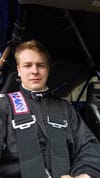Susquehannock Trail Performance Rally 2017
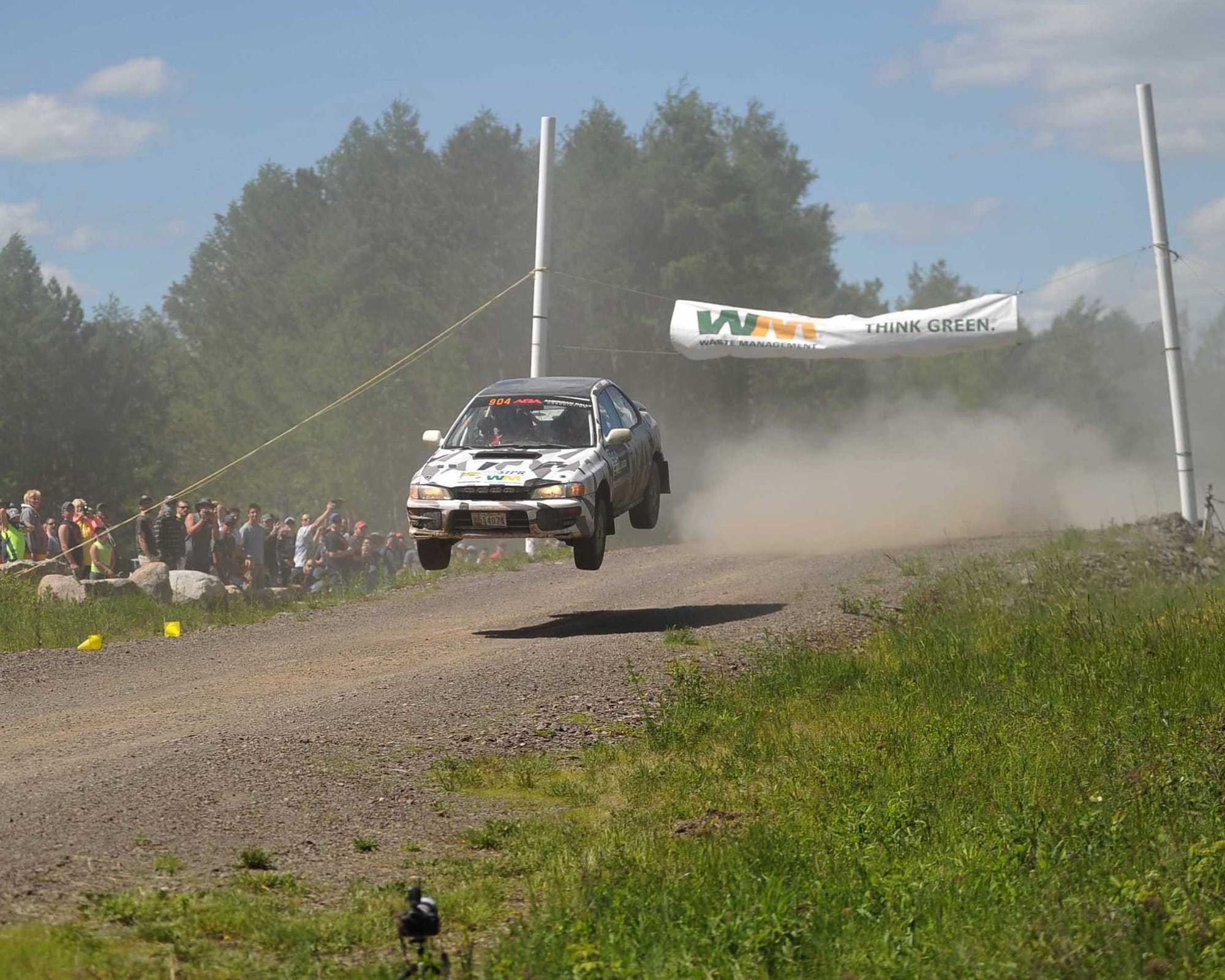
If you remember from last time, I had to do quite a lengthy repair before our next event, Susquehannock Trail Performance Rally (STPR) in Wellsboro, PA. It was the weekend before the event that the engine was finally put back in the car, and it fired back up without any problems.
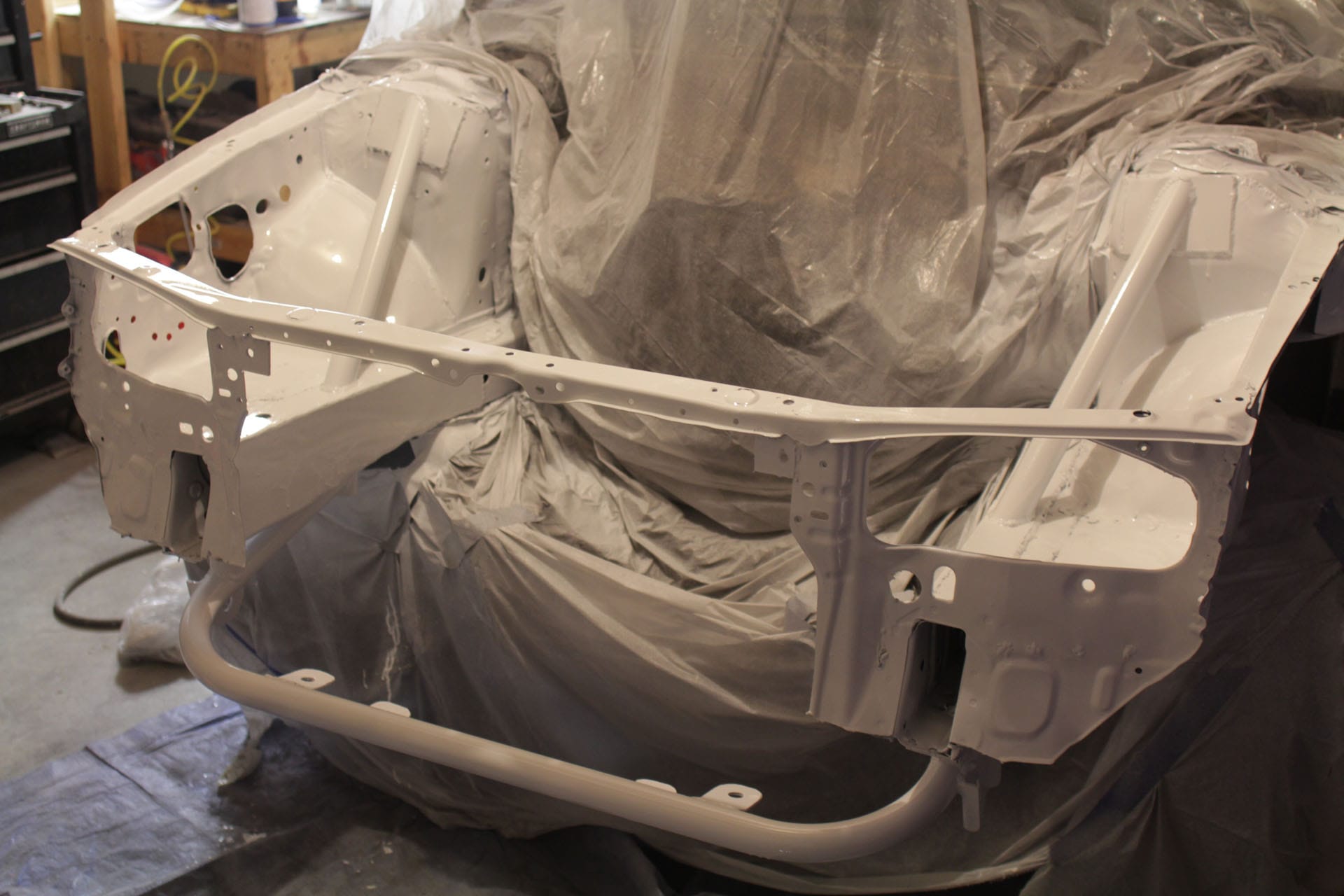
Along with the frame rail repairs, I made the following modifications:
- Group N Engine Mounts
- Group N Transmission Mount
- Polyurethane Transmission Cross-member Bushings
- Polyurethane Steering Rack Bushings
- Swapped Pirelli K4 195/70R15 tires to Yokohama A035-E Soft 185/65/R15
- Added Fog Light Covers
and repairs:
- Warranty replaced the rear coilovers from HSD (shaft would seize in shock body randomly)
- Replaced the front timing belt cover after the radiator smashed it
- Replaced my smashed Mishimoto radiator with an OPL radiator one because Mishimoto did not replace it despite their lifetime warranty and accident protection (OPL's part is identical, and half the price...)
- Re-greased the front coilovers, 40mm Bilstein Universal MotorSport Struts
- Replaced left steering rack bellow
- Replaced rear left wheel bearing
- Replaced spark plugs with NGK coppers
Arriving at Wellsboro, PA
We arrived at our vacation home very late, so we did not make it to recce until around noon. We saw this as an advantage because we probably would not have to deal with recce traffic on the stage. Recce was as we intended, clear and fun. I was looking forward to putting my "new-to-me" Pathfinder tow and recce vehicle out on the stages. Not that it's anything extraordinary, but it's the best recce vehicle I've ever been in. Here's what it's got:
- 240HP V6 - VQ35DE
- 5-speed Manual
- Manual 4WD
- Rear limited slip differential
- Rancho struts
- Rancho shocks
- New brakes all around
Our recce got cut short though because our crew had some complications at tech inspection. This was our first American Rally Association (ARA) event. Most of the ARA rules are from the FIA rule book, which is more strict than the NASA one that we are used to. It required fuel lines to be mounted outside of the car or inside of the perimeter of the roll cage. My fuel lines were not modified from stock, which is inside of the car, but outside of the roll cage perimeter. We ended up having to pull these fuel lines out, move them inside of the roll cage perimeter, and re-flare them with a union to make them pass tech for the weekend.
We got the car prepared just in time to get reinspected and head off to shakedown. Shakedown was straight forward, nothing technical, just fast. We did the ~ 1 mile shakedown 4 times to make sure we were warmed up. With all that was going on leading up to the event, I didn't have immediate confidence in the car, but this shakedown turned everything around. We were finally ready for the next two days of racing.
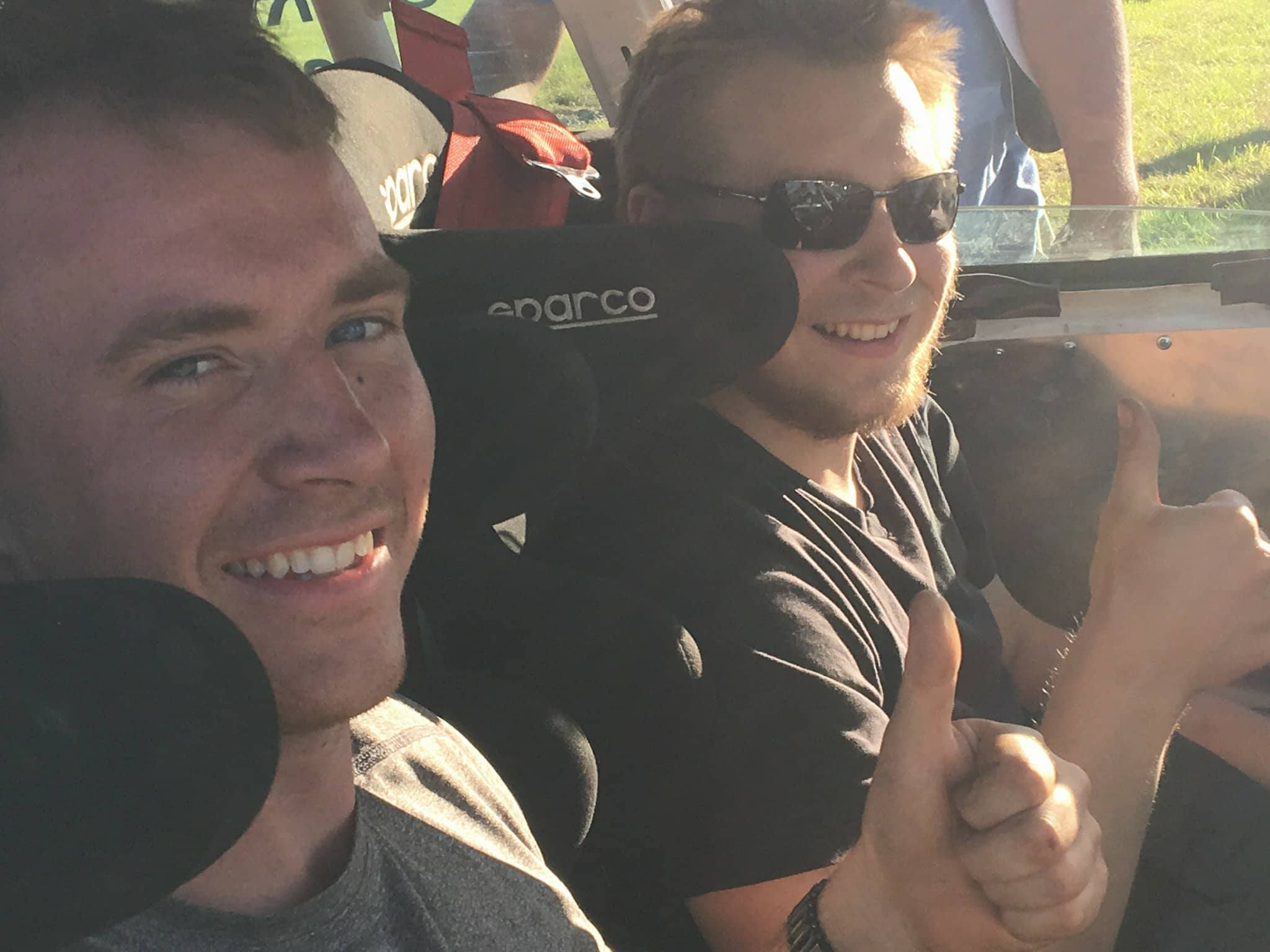
Race Day 1
The first day of STPR is notorious for being rough on the car, despite having such a short schedule. Only 19 stage miles, 2 stages at Waste Management (these are the same stages that I raced on at WMWR and 2 European style super special stages. The Waste Management stage is very rough, technical, and includes a huge jump. The key here is to make it through the day and try not to hurt the car. Even though I just bought new Yokohama rally tires for the car, I decided to use the Pirillis to absorb all of the rough conditions of day 1.
We started stage 1, and Larry immediately lost his place in the notes and had a hard time getting back on track. I drove the stage without notes for the most part until the big jump. Luckily, I co-drove for this stage twice, and ran it at WMWR this year, so I had a pretty good idea of where all of the tricky sections were. We also took the big jump as hard as we could because - why not? I landed a little bit more on the nose than I wanted, but the car was fine. The new front-end I built really paid off! Next time I will remember to brake and then accelerate to point the front of the car up before I take off. We ended up catching up to the car in front of us right before the finish. The roughness of the stage was so much greater than WMWR; after we finished that stage, there were several dents in the floorboard. The rear lateral link mount on the subframe even sheared slightly. I wasn't surprised by this though, the subframe was already fairly rusty from its past life. Regardless, when we found our stage time for that run, we were pretty happy with it.
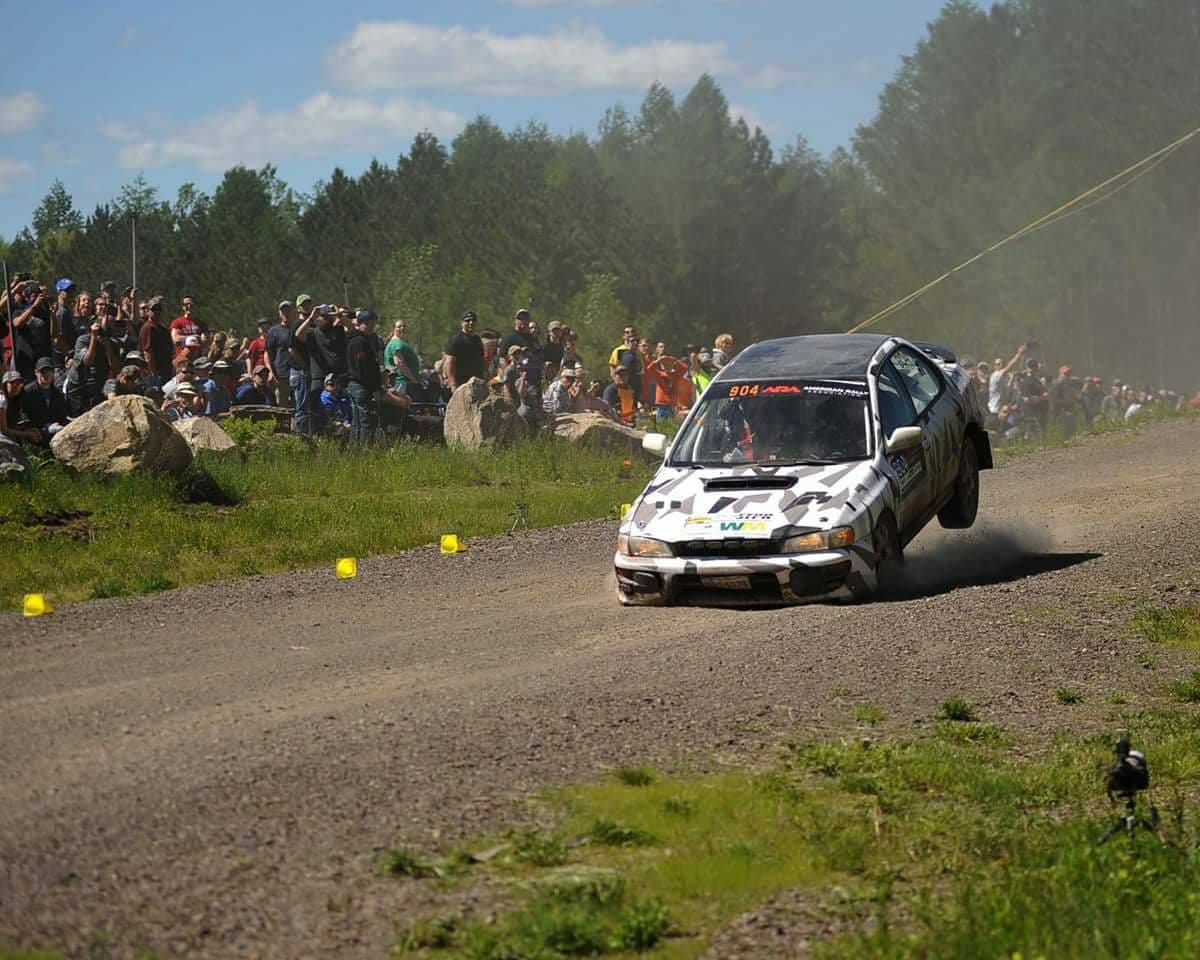
Knowing the condition of the lateral link mount, we decided to take the second run of the Waste Management stage lightly. We already heard from various competitors and volunteers about pictures and videos of our spectacular jump that immediately surfaced. Unfortunately for us, we couldn't take it a second time around. There was a Honda Civic rally car, the one we drag raced in this rally video, that crashed in the middle of the stage and showed a red cross - a sign that they need medical attention. It turned out that was a false alarm, and it ended up causing everyone after the Civic to stop racing and receive a bogie time. We were a bit upset about that, but then again it was nice that it let us keep the car going without ripping out the rest of that lateral link mount.
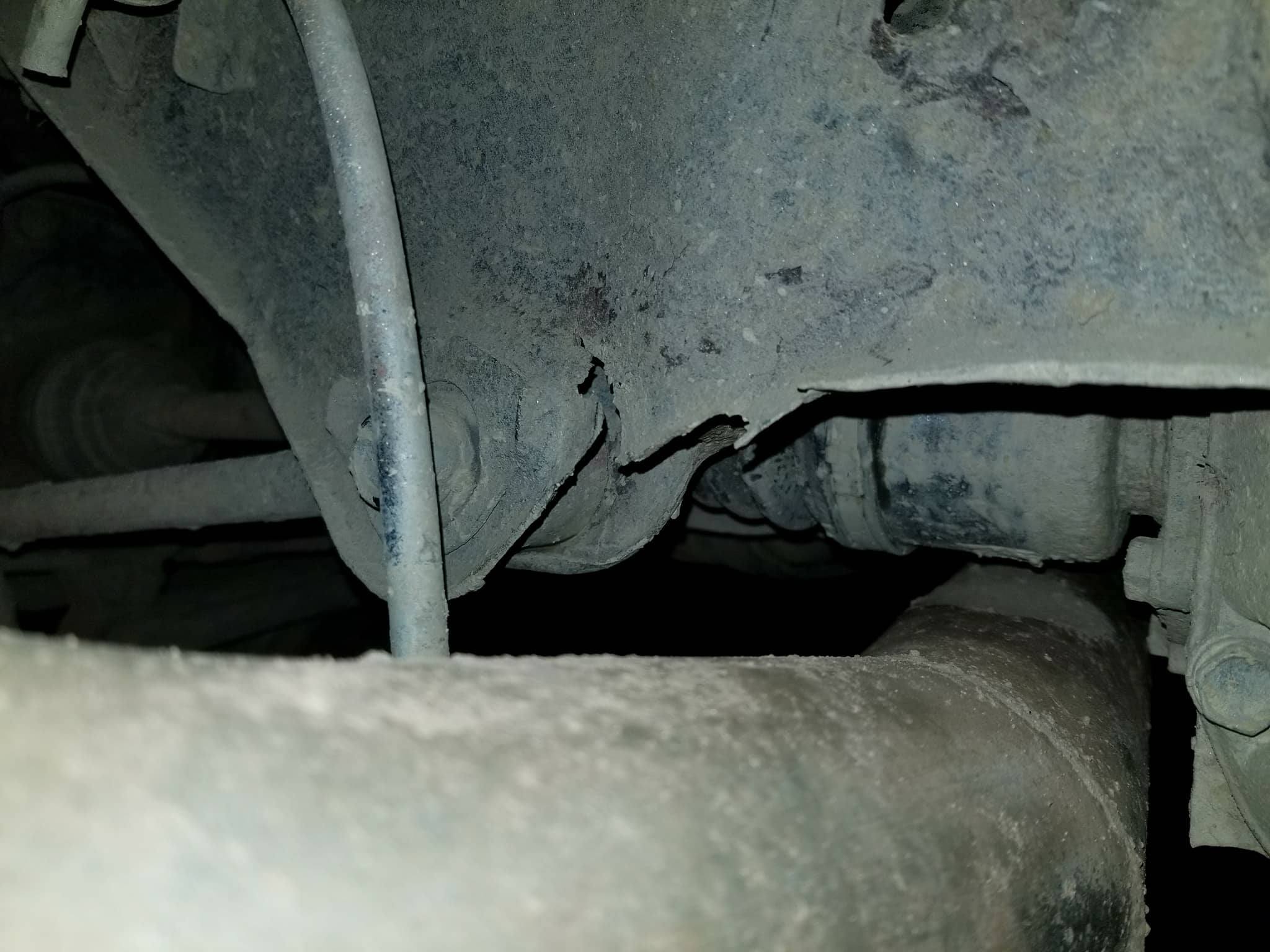
We had a lot of fun at the super special stages that came afterwards. It was a large rallycross-like course that was made out of large berms. On one of our runs we high centered one of the berms, so that was a bit embarrassing being in front of the crowd, but luckily we managed to get going again. After all of the stages on day 1, the car still ran great, and the lateral link mount was still attached.
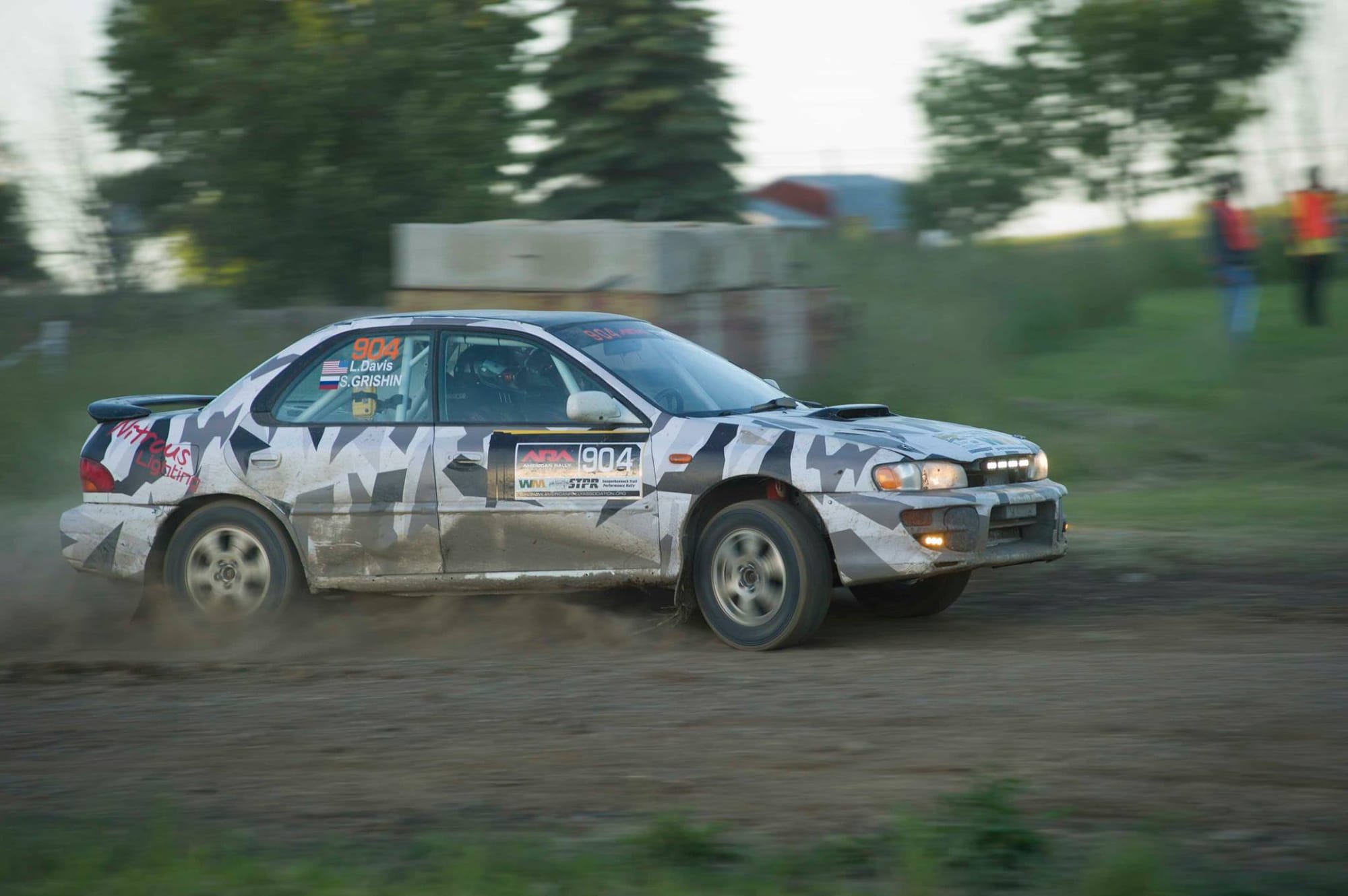
Our crew located another team that had a welder in their service vehicle at the end of the day. That team had Ryan Thompson from Thompson Racing Fabrication (TRF) taking care of their service needs. He was very helpful and lent us a helping hand by welding a section of steel to our subframe, which held the sheared sections together after we hammered it back into place. After that, we had nothing to worry about anymore, and were ready to tackle day 2 with full force!
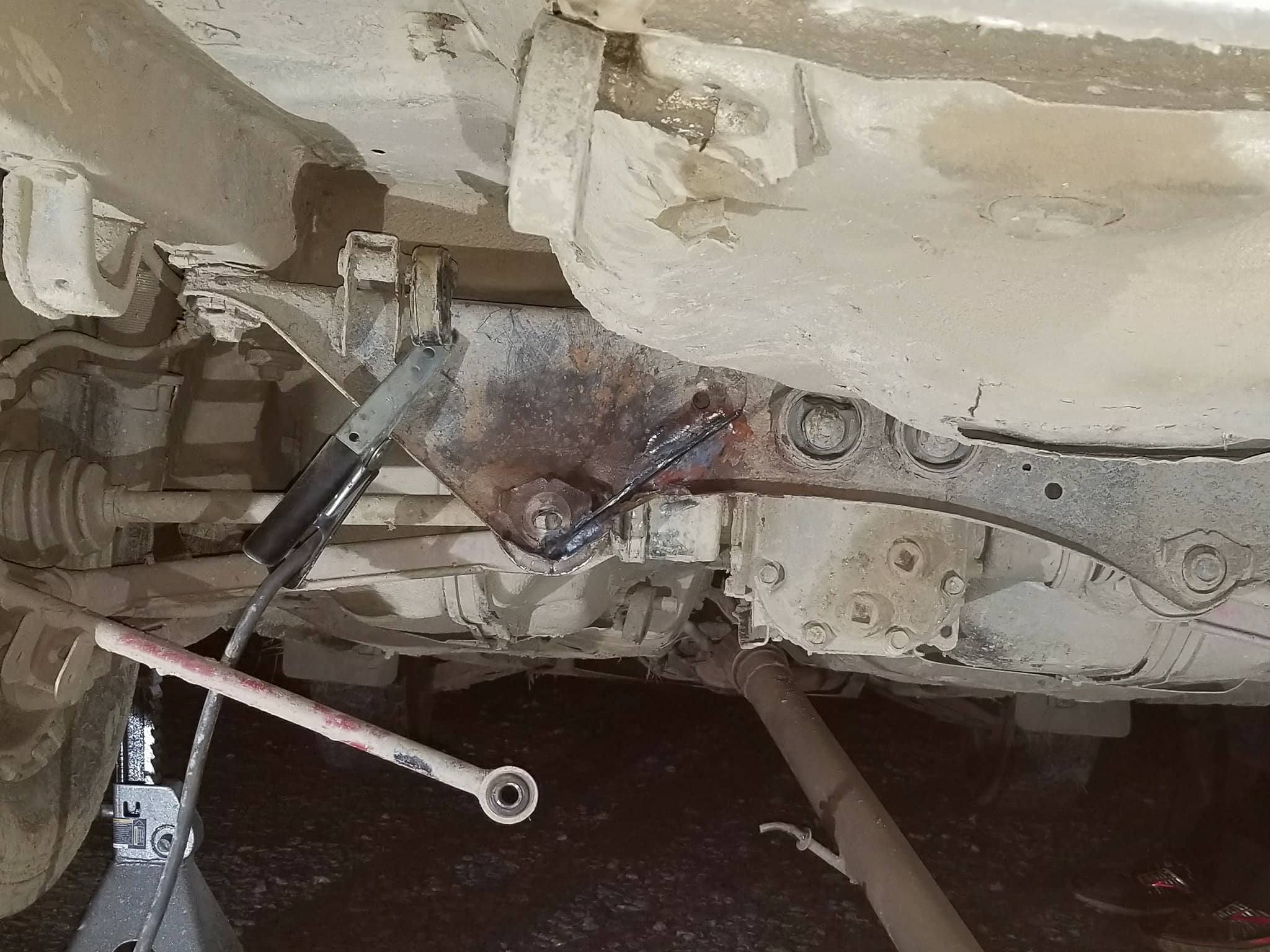
Race Day 2
For the first stage of the second day, stage 5, we got another bogie time. One of the Team O'Neil Ford Feistas caught on fire in the middle of the stage! At this point it was getting frustrating because I already missed 2 stages that were outside of my control.
Nevertheless, we completed the next stage. We had sort of an off towards the last mile though. The car oversteered on an R5 on a loose section going downhill. It sent us into a ditch that pulled off our bumper and debeaded one of the rally tires. We pressed on regardless and changed the tire on transit.
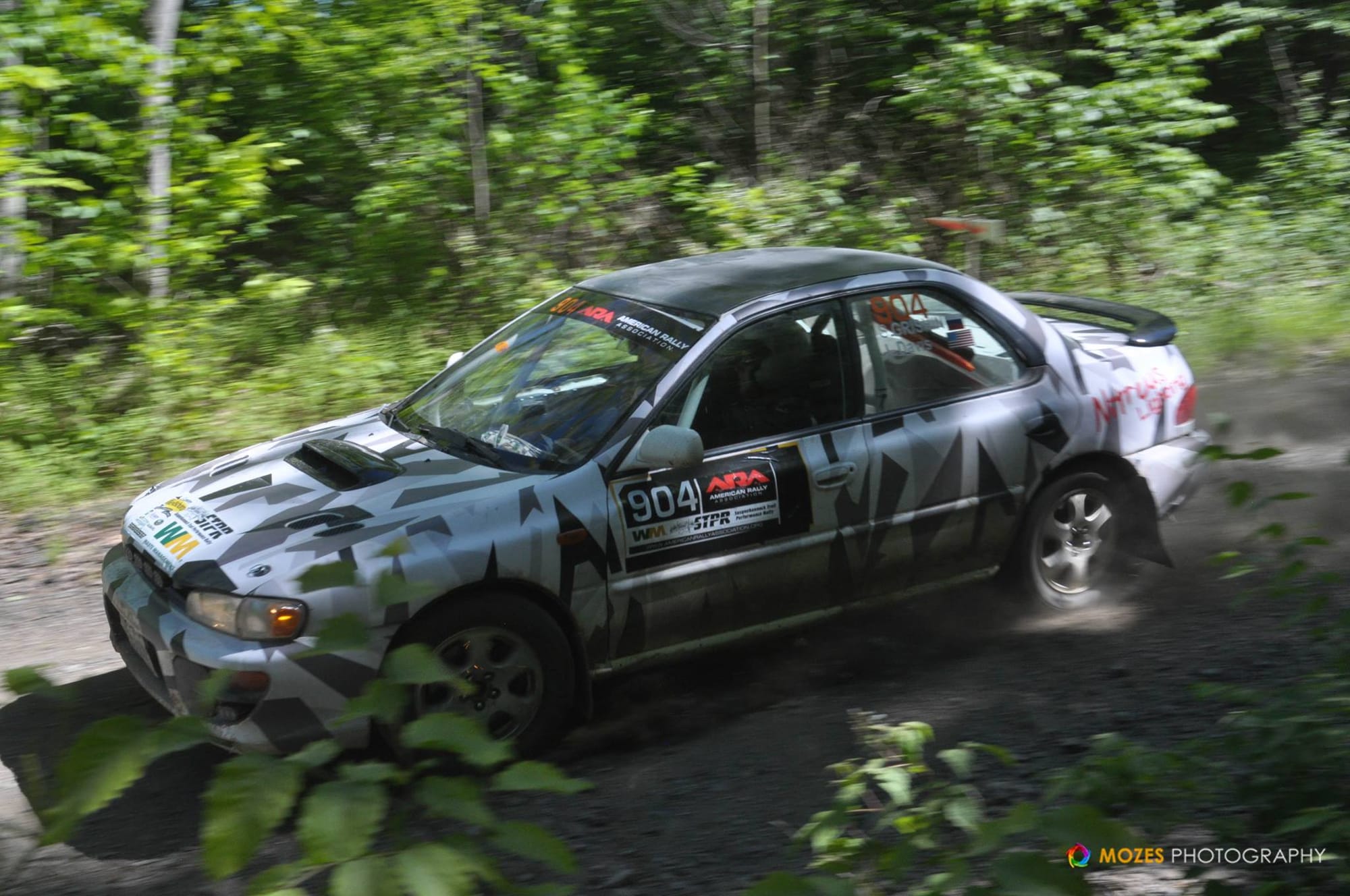
For stage 7, I really began to feel the severity of the loose sections, especially downhill. So far day two proved to be unpredictable when it came to traction compared to day one. There would be random sections of very loose gravel, which can be scary when you have to start braking while going downhill at about 80mph.
We made it back to service, and everything on the car looked okay. We decided to change the Pirelli tires over to the Yokohamas now that we didn't have any more spare Pirellis. My front bumper cover was left with the volunteer time keepers back on stage 6, but sweep didn't bring it back to service while we were there, so we ran the rest of the event without a front bumper cover.
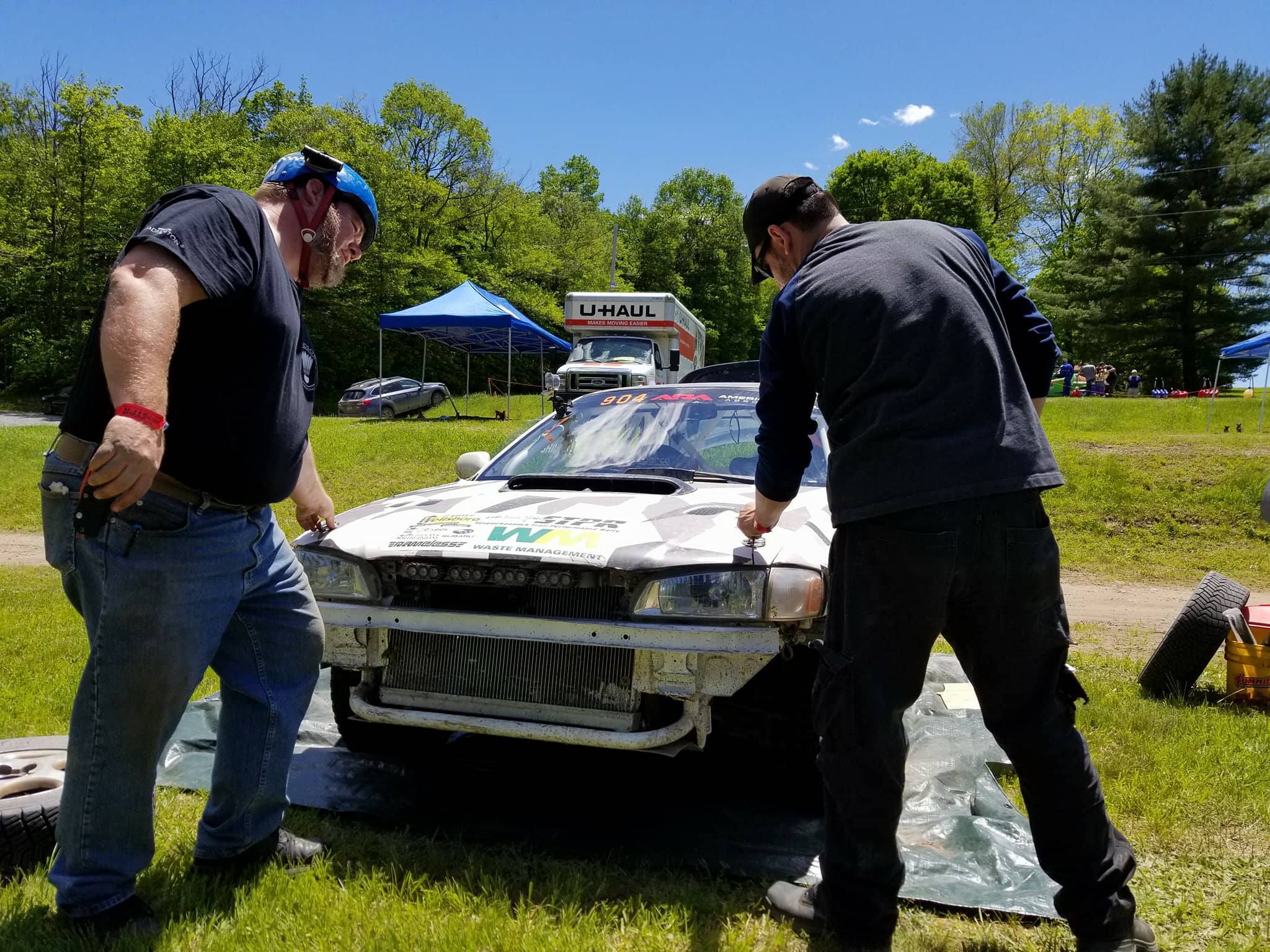
On stage 8 we felt really good. Very fast and smooth, I was impressed with these new tires. We caught up to the car in front of us again. This time there was less loose sections than the previous timecard. This one had random muddy sections to watch out for. I also remember needing to slalom in the middle of the stage, but instead of going around cones, it was trees.
Video of that stage:
Stage 9 was the stage known for the 'overlook'. That is a section of the stage that includes a moderate right turn. The problem is, if you miss the turn, you are sent flying into the sky since there are no trees in front of you, only below. I made sure to slow down for that section. We ended up catching up to the dust coming from the car in front of us. The dust covered everything after the finish line, so we didn't know when the next R5 turn would be. We were already going very fast downhill in the loose dirt. Typically that wouldn't be a problem given how mild the turn is, but I couldn't tell when the turn might be, so I just had to guess. It turns out that I guessed a little too late, and we ended up going off of the stage and rolling over. It was a bummer, and quite bizarre that we didn't see a trail of dust, but rather a smokescreen of dust right after the finish.
Video of that stage, including the roll over:
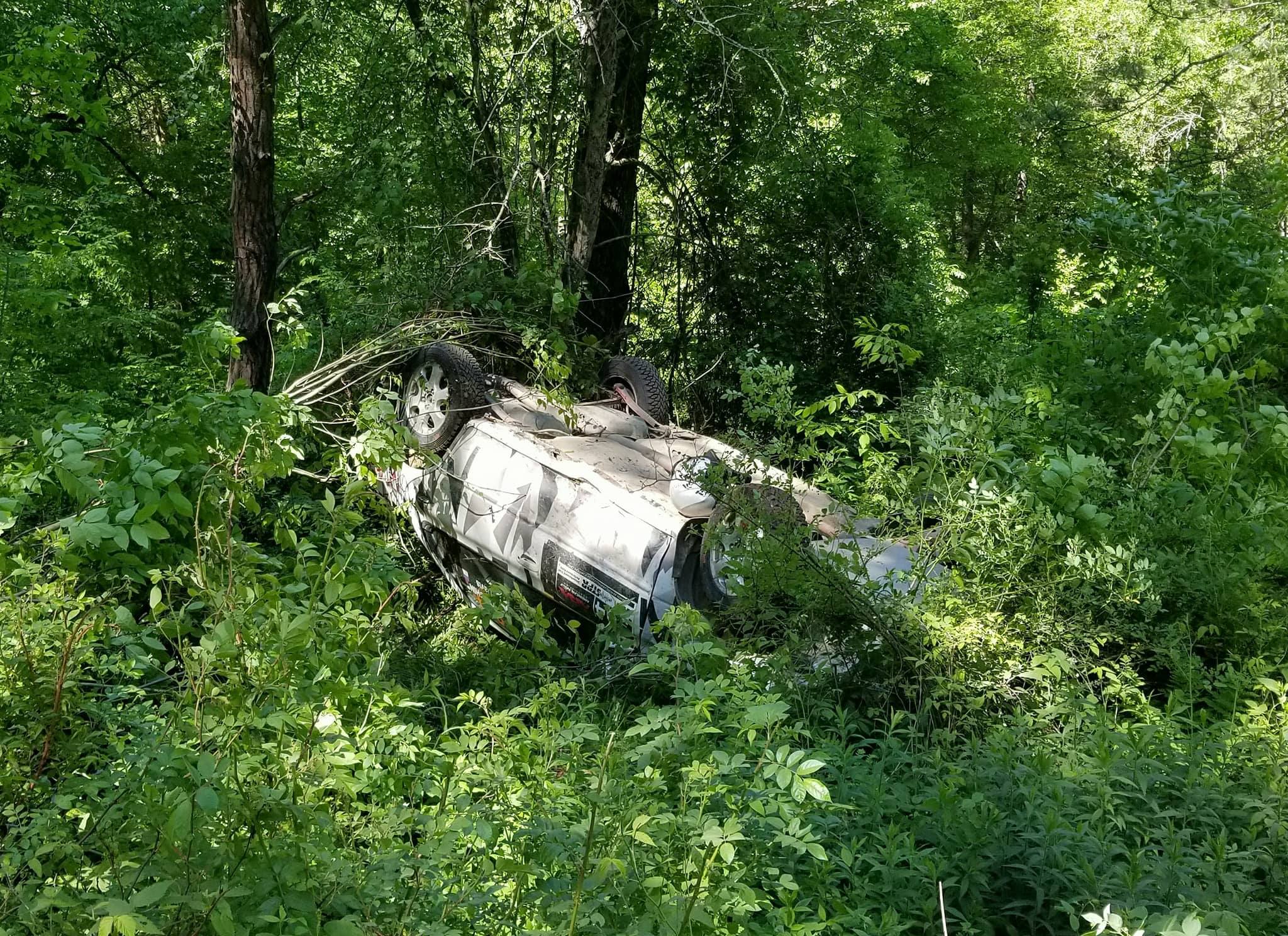
We were both okay, and the car was still drivable and mechanically sound despite all of the dents. We ended up driving the car to the local grocery store after the stage and grabbed some lunch and ice cream to help us chill out.

We went back for the super special stage that day, and we were allowed to run it for fun even though we didn't finish. Our crew straightened out the fenders so they would clear the wheels, and we were off!
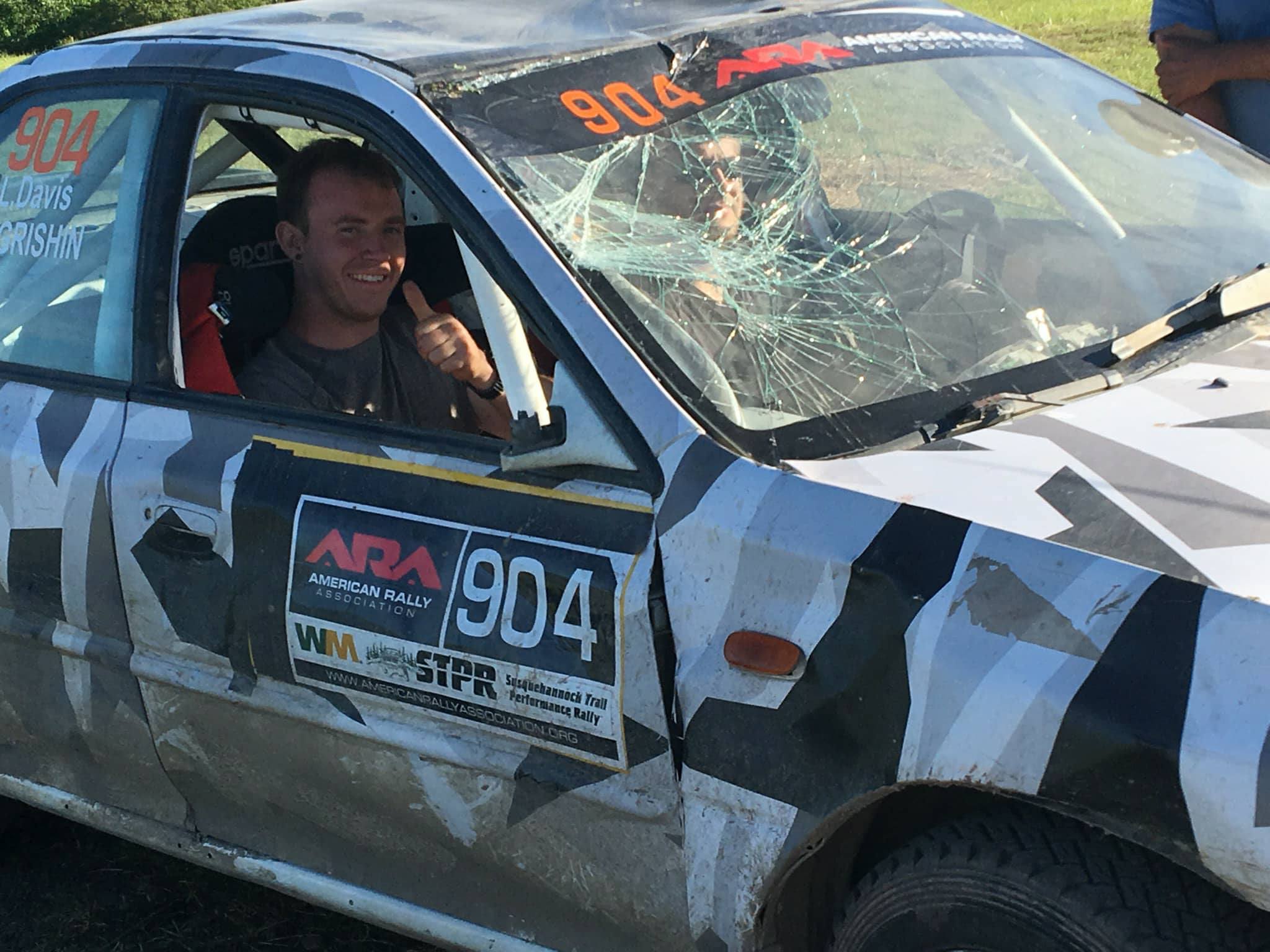
After this event, I learned a lot of new lessons. Lessons that I could not possibly learn at any of my other events.
- Before jumps: brake, then quickly accelerate before taking off.
- When going downhill at a high speed, expect to brake much earlier, especially if the surface is loose.
- If you see dust, slow down, it's not worth it to follow so close. I had this problem at Sandblast too, but I was lucky there.
Special thanks to our crew for all of the awesome support:
- Thomas Critelli
- Ted Andkilde
- Mateusz Czwakiel
Cover photo by Evan Sanders

